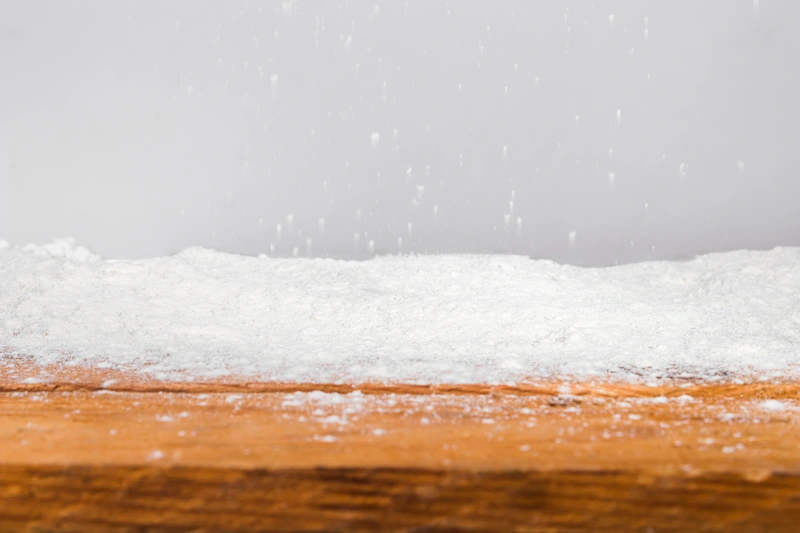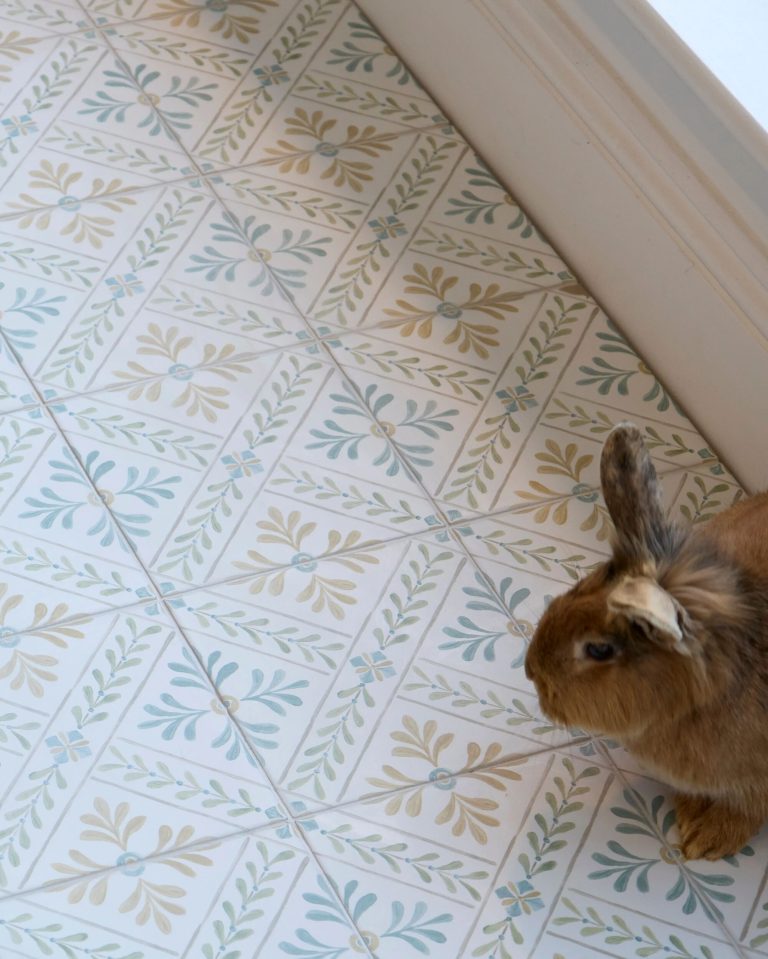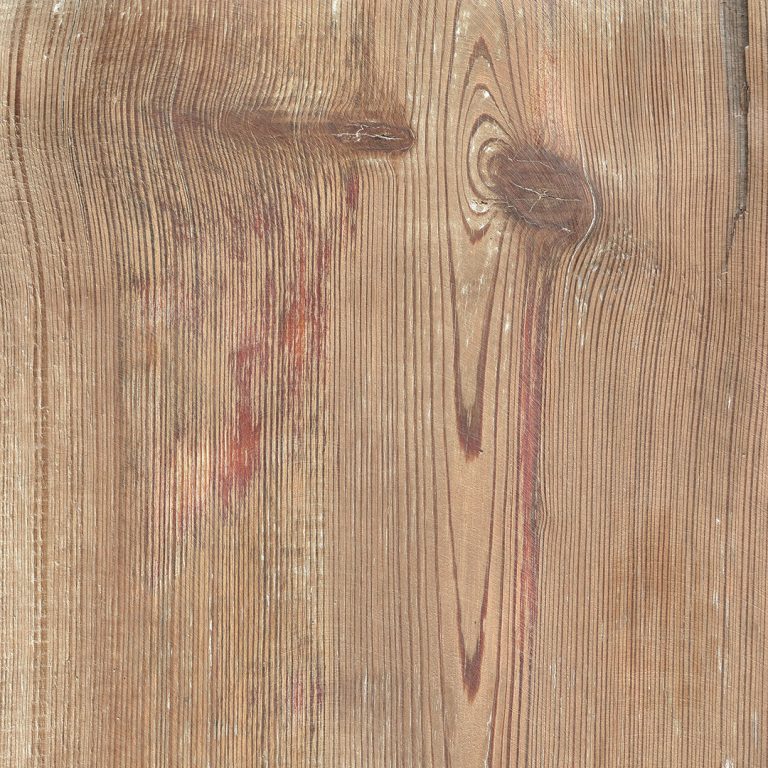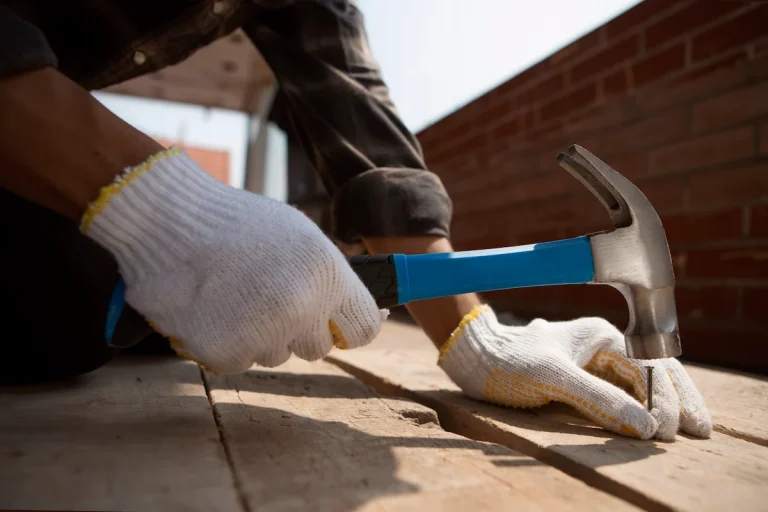As winter envelops the landscape in snow, the application of salt for ice melting becomes imperative for ensuring safety. While this substance may appear innocuous, it can cause significant damage to floors if not handled appropriately. It is essential to comprehend what snow salt is and its effects on different types of flooring in order to maintain the integrity of your home.
This guide provides effective methods for the removal of snow salt, outlines necessary precautions, and offers strategies for preventing damage, thereby ensuring that your floors remain in excellent condition throughout the winter season.
What is Snow Salt?
Snow salt, frequently used during the winter season, serves as an effective de-icing agent for melting ice and snow on outdoor surfaces, including pavements, driveways, and entrances. While it significantly enhances safety on slippery surfaces, snow salt can leave a residue that accumulates on floors when inadvertently tracked indoors.
This residue has the potential to cause damage and result in unsightly stains on various types of flooring. It is crucial for homeowners to understand the characteristics of snow salt, as this knowledge enables them to implement effective cleaning solutions to preserve the integrity of their floors during and after the winter months.
Why is it Important to Remove Snow Salt from Floors?
The removal of snow salt from floors is essential for preserving both the aesthetic appeal and structural integrity of various flooring types, including hardwood, tiles, and laminate. Snow salt can lead to unsightly stains, create a slippery residue, and potentially damage surfaces if not addressed in a timely manner.
The significance of this cleaning process is particularly heightened during the winter months when snow is common. Therefore, it is imperative for homeowners to be informed about effective solutions to maintain clean indoor spaces and mitigate salt-related issues.
What Are the Different Types of Floors Affected by Snow Salt?
Different types of flooring in residential settings can be adversely affected by snow salt, including hardwood, carpet, tiles, and concrete surfaces. Each flooring type possesses unique characteristics, and snow salt can leave behind persistent stains and residues that necessitate specific cleaning solutions for effective removal.
It is essential for homeowners to understand how snow salt interacts with these surfaces, as this knowledge informs the appropriate cleaning methods and precautions needed to maintain the beauty and longevity of their floors throughout the winter season.
Hardwood Floors
Hardwood floors are particularly vulnerable to damage caused by salt from snow, as the residue can penetrate the wood’s surface, leading to stains and potential warping over time if not cleaned appropriately. Proper maintenance is essential for preserving both the aesthetic appeal and structural integrity of these floors.
To effectively address the persistent effects of salt from snow, one can employ simple yet effective cleaning solutions. A mixture of equal parts water and white vinegar serves as a gentle cleanser, effectively breaking down residue without the use of harsh chemicals. Alternatively, incorporating a few drops of washing-up liquid into warm water can create a mild cleaning solution.
When mopping, it is crucial to utilise a damp mop rather than a soaking wet one to prevent water from seeping into the seams of the boards. To further protect the finish of the hardwood floors, the following steps are recommended:
- Promptly wipe up spills and salt residue.
- Place mats at entryways to trap salt before it reaches the floor.
- Use furniture pads to avoid scratches during cleaning.
By employing these methods, one can significantly enhance the longevity and appearance of hardwood floors, ensuring they continue to serve as a beautiful element of the space.
Carpet Floors
Carpeted floors tend to trap snow salt residues, making it essential to address any salt tracking promptly in order to prevent long-term staining or damage to the fibres.
To effectively eliminate these persistent residues, regular vacuuming is crucial, as it removes loose salt particles before they can become deeply embedded in the carpet fibres. It is advisable to perform this task at least twice a week during snowy seasons.
Using specialised carpet cleaners specifically designed for salt removal can significantly enhance cleaning efforts.
When confronted with spills or tracked-in salt, immediate attention can yield considerable benefits. The following cleaning methods are effective:
- Blot the affected area with a clean cloth to absorb excess moisture.
- Apply a solution of water and vinegar to break down the salt’s structure.
- Rinse the area with clean water and blot it dry.
Implementing these practices not only helps maintain the carpet’s appearance but also extends its overall lifespan.
Tile Floors
Tile floors, due to their moisture resistance, can still accumulate snow salt residue. If this residue is not addressed promptly, it may lead to discolouration and create slippery surfaces.
Regular maintenance is essential not only for aesthetic appeal but also for safety. Maintaining a clean tile floor is crucial, as it helps prevent accidents associated with slippery conditions. To effectively clean tile floors, homeowners should adopt a systematic approach.
- Begin by sweeping or vacuuming the floor to eliminate loose dirt and debris.
- Once the initial cleaning is completed, mopping with a vinegar solution is highly recommended. A mixture of one part vinegar to three parts water provides a natural yet effective cleaning solution that can leave tiles shining without the use of harsh chemicals.
- Furthermore, utilising soft brushes can assist in targeting stubborn stains while safeguarding the surface from scratches.
Establishing a consistent routine, such as cleaning the tiles on a weekly basis, can significantly extend their lifespan and maintain their visual appeal.
Recommendations for maintaining tile floors include:
- Utilising mats at entry points to minimise the introduction of dirt.
- Promptly addressing spills to prevent staining.
- Avoiding the use of abrasive materials during the cleaning process.
By adhering to these practices, homeowners can enjoy a clean and safe tile floor throughout the year.
Concrete Floors
Concrete floors are susceptible to the corrosive effects of snow salt, which can result in unsightly discolouration and surface deterioration if not properly maintained.
To address this concern, property owners should implement an effective cleaning regimen to uphold the integrity of their surfaces. Regular maintenance of concrete not only preserves its appearance but also significantly extends its lifespan.
One efficient method is pressure washing, which utilises high-pressure water to effectively remove salt residue without damaging the underlying concrete. The use of high-quality cleaning agents specifically formulated for concrete surfaces can further aid in breaking down stubborn, embedded salts that pressure washing alone may not eliminate.
When considering a cleaning approach, it is advisable to:
- Assess the extent of salt damage before selecting the appropriate cleaning method.
- Choose eco-friendly cleaners to minimise environmental impact while achieving optimal results.
- Seal the concrete post-cleaning to provide a protective layer against future salt accumulation.
By incorporating these strategies into a regular maintenance routine, the detrimental effects of snow salt can be mitigated, thereby ensuring that your significant investment remains intact and visually appealing.
What Are the Common Methods for Removing Snow Salt from Floors?
There are various established methods for removing snow salt from floors, which can be utilised based on the type of flooring and the extent of the residue.
Techniques such as vacuuming, mopping with specialised cleaning solutions, and employing steam cleaners can effectively eliminate accumulated salt and prevent long-term damage.
Each method offers distinct advantages, and selecting the appropriate one is essential for maintaining the cleanliness and integrity of the floors, especially during the challenging winter months.
Vacuuming
Vacuuming serves as an effective initial step in the removal of snow salt from floors, as it aids in eliminating loose salt particles before they can lead to staining or residue build-up.
To optimise this cleaning process, it is essential for individuals to select a vacuum that is equipped with a HEPA filter. This specific filter not only captures larger salt particles but also effectively traps fine dust and allergens that may circulate in the home during the winter months. Regular vacuuming, ideally conducted several times a week throughout the snowy season, helps prevent the accumulation of harmful deposits that can gradually damage flooring surfaces, including carpets and hardwood flooring.
Implementing the following best practices can significantly enhance cleaning results inside your house:
- Check the vacuum: Ensure that the vacuum is in proper working condition and that the filter is clean. This will help in the clean-up process.
- Use appropriate attachments: Utilise a brush attachment for carpets and a hard floor attachment for smoother surfaces to maximise effectiveness. This is especially important for removing salt residues during the seasonal cleaning.
- Conduct thorough cleaning: Vacuum all corners and crevices where salt may accumulate unnoticed.
By maintaining a consistent cleaning schedule and utilising the correct tools, individuals can protect their floors and improve indoor air quality.
Mopping
Mopping is an essential cleaning technique for effectively removing salt residue from snow from floors, including hardwood flooring and concrete flooring, and using the appropriate cleaning solution can significantly enhance the results.
Different flooring materials require distinct approaches to mopping, making it imperative to select the suitable type of mop and cleaning solution. For hardwood floors, a microfibre mop dampened with a gentle mixture of vinegar and water proves to be highly effective without causing any damage. For concrete flooring, a stronger solution may be required. In contrast, tiled surfaces benefit from a scrubbing mop combined with a few drops of diluted dish soap, which aids in lifting stubborn dirt.
It is important to adhere to a specific mopping technique:
- Begin by sweeping or vacuuming the floor to eliminate loose debris.
- Dip the mop into the cleaning solution, wring it out thoroughly to avoid excess moisture, and commence mopping from one corner of the room.
- Work in sections, rinsing the mop frequently to prevent the redistribution of dirt.
- For optimal results, allow the floor to air dry after mopping.
Understanding these nuances can greatly enhance cleaning efficiency and prolong the lifespan of your flooring materials. Employing these tips ensures better care for your floors.
Using a Steam Cleaner for Professional Results
Utilising a steam cleaner represents an advanced technique for effectively removing snow salt from floors, delivering a thorough clean that penetrates and dissolves residues efficiently. This innovative cleaning tool is particularly advantageous during the winter months when salt and grime accumulation from snowy conditions can result in unsightly marks and potential damage to various types of flooring. Professional cleaning services often recommend steam cleaning for its effectiveness.
When employing a steam cleaner, it is essential to understand how to adapt its use to different surfaces to maximise both efficiency and care. For example, when cleaning hardwood floors, it is crucial to maintain the appropriate temperature, as excessive heat may damage the finish. In contrast, tile and grout can benefit significantly from steam cleaning, as the intense heat effectively sanitises and removes stubborn dirt.
- Laminate flooring: Ensure that the steam cleaner is set to a low moisture level to prevent warping.
- Carpets: Utilise a nozzle attachment to penetrate fibres deeply without saturating them.
- Vinyl: This resilient surface can tolerate higher temperatures, facilitating effective disinfection. Steam cleaning is also suitable for carpeting by using appropriate attachments.
Adopting this cleaning method not only sanitises surfaces but also reduces the reliance on harsh chemicals, aligning with environmentally friendly cleaning practices.
Using a Vinegar Solution
A vinegar solution is a widely recognised DIY cleaner for effectively removing snow salt from floors due to its acidic properties. This makes it an economical and environmentally friendly option for homeowners who wish to restore their floors to their original condition without utilising harsh chemicals. DIY enthusiasts find this method particularly useful.
To prepare an effective vinegar solution, one should combine one part white vinegar with three parts water. This diluted mixture preserves the cleaning efficacy of the solution while minimising potential damage to floor surfaces.
Once the solution is prepared, it can be applied to various types of flooring:
- Tile and Laminate: Use a mop or cloth to apply the solution, allowing it to sit for a few minutes before wiping it dry to prevent moisture damage.
- Hardwood Floors: Exercise caution with hardwood, as excessive vinegar may strip the finish. It is advisable to dampen a cloth with the solution and gently wipe the surface.
- Vinyl Flooring: A vinegar solution is effective on vinyl flooring; however, it is important to rinse afterwards to eliminate any residual vinegar.
It is recommended to first test the solution in a small, inconspicuous area to ensure compatibility with the flooring material. Additionally, ensure that the area is well-ventilated while using the solution to mitigate any lingering odours.
What Precautions Should Be Taken When Removing Snow Salt from Floors Inside Your House?
When removing snow salt from floors, it is crucial to take specific precautions to ensure both safety and the preservation of the flooring material. This includes using appropriate cleaning agents, wearing protective equipment, and ensuring adequate ventilation during the cleaning process. These precautions are essential for effective care.
By following these safety measures, homeowners can effectively eliminate salt residues while minimising the risk of damage to their floors and maintaining a safe indoor environment. Additionally, cleaning the doorstep can prevent dirt from being tracked inside.
Protecting Your Hands and Skin During Seasonal Clean-Up
Protecting the hands and skin during seasonal clean-up is essential, particularly when using strong cleaning agents or hot water, as snow salt residue can be irritating. It is important to consider the impact on both skin health and overall well-being, as prolonged exposure to harsh chemicals may lead to dermatitis or other skin conditions.
To effectively safeguard oneself, the use of high-quality gloves and other protective equipment, such as aprons and face masks, is crucial. This provides a barrier against harmful substances and reduces the risk of allergic reactions.
The following are important skin care tips to consider after cleaning:
- Rinse Thoroughly: Always wash the hands with mild soap and water to remove any residual cleaning agents or salt.
- Moisturise: Apply a quality moisturiser or hand cream after washing to replenish the skin’s moisture barrier.
- Avoid Hot Water: Use lukewarm water for washing hands, as hot water can exacerbate skin dryness.
- Protect: Whenever possible, wear gloves during future cleaning tasks to minimise skin contact with irritants.
By adhering to these guidelines, individuals can maintain healthier skin while ensuring an effective cleaning process.
Ventilating the Area
Proper ventilation of the area being cleaned is essential when removing snow salt, particularly when using chemical cleaners that may emit fumes.
Ensuring adequate air circulation can significantly reduce the concentration of harmful particles in the air, making it imperative to implement effective measures. One effective approach is to open windows to facilitate a direct flow of fresh air, which aids in diminishing any accumulation of noxious chemicals.
Additionally, employing the following methods can further enhance indoor air quality:
- Using fans to promote air movement
- Activating exhaust vents to expel contaminated air
- Implementing air purifiers to filter out impurities
It is crucial to recognise that maintaining good air quality extends beyond comfort; it directly influences health and safety. Exposure to substandard air quality can result in respiratory issues and other detrimental health effects, highlighting the necessity for proactive measures during the cleaning process. Using professional-grade air purifiers can be particularly effective.
Using Protective Gear for Effective Cleaning
Utilising protective gear, such as gloves, masks, and eyewear, is essential when cleaning snow salt from floors to prevent accidental exposure to irritants. These precautions are not just recommended but vital for an effective cleaning process.
This precaution is particularly important for individuals who frequently engage in cleaning tasks, as the alkaline nature of snow salt can lead to skin irritation and respiratory issues if proper measures are not observed. Employing appropriate protective gear significantly mitigates these risks.
For example, wearing durable gloves not only protects the skin but also provides a better grip when handling cleaning tools. A well-fitted mask effectively filters out harmful particles, while safety goggles guard the eyes against splashes and debris.
- Gloves: Protect against skin irritation
- Masks: Filter harmful particles
- Eyewear: Shield the eyes from splashes
Implementing these preventative measures enhances overall safety and facilitates a more effective cleaning process. Always follow these tips to ensure the best results.
How Can You Prevent Snow Salt from Damaging Your Floors, Carpets, and Other Surfaces?
Preventing snow salt from causing damage to flooring requires a systematic approach that includes the use of entrance mats, consistent cleaning practices, and the adoption of alternative de-icing methods. By implementing these strategies, homeowners can effectively minimise the amount of salt tracked indoors, thereby safeguarding their flooring from unsightly stains and long-term deterioration. For those interested in a DIY approach, creating a salt management plan can help protect your floors efficiently.
Establishing a regular maintenance routine during the winter months is essential for managing snow salt, ultimately contributing to a safer and cleaner home environment.
Using Mats and Rugs
Utilising mats and rugs at entryways is an effective strategy for preventing the tracking of snow and salt onto floors, as they capture debris and moisture before it can accumulate.
Selecting the appropriate materials for these mats can significantly enhance their capability to trap dirt and moisture. For example, rubber-backed mats offer excellent traction and durability, making them particularly suitable for high-traffic areas.
- It is advisable to use absorbent materials such as microfiber or coir, which are effective in soaking up moisture.
- Proper placement is crucial; positioning mats both outside and inside the entryway will maximise their effectiveness.
- Regular maintenance is essential for ensuring the longevity of the mats; heavy debris should be shaken out, and mats should be washed periodically in accordance with the manufacturer’s instructions.
By implementing these strategies, individuals can maintain a clean and salt-free indoor environment.
Regular Cleaning and Maintenance
Implementing a schedule for regular cleaning and maintenance of floors is essential for minimising the impact of snow salt and ensuring the timely removal of any residues.
During the winter months, when snow and salt are prevalent, establishing a comprehensive cleaning routine becomes increasingly important. This practice aids in preserving the integrity of the floors and preventing unnecessary wear and tear. Homeowners and business proprietors should aim for a cleaning frequency that aligns with peak winter conditions, ideally conducting cleanings at least once or twice a week.
- Regularly sweep or vacuum to eliminate dust and debris.
- Mop or wipe surfaces with appropriate solutions to address any remaining salt residue.
Utilising entry mats can significantly reduce the amount of salt brought indoors, further safeguarding the flooring investment. Maintaining clean floors not only enhances their appearance but also promotes a safer and healthier environment for all individuals.
Using Alternative De-icing Methods
Considering alternative de-icing methods can significantly reduce reliance on traditional rock salt, thereby minimising the potential for damage to both flooring and the environment.
Exploring various solutions not only promotes sustainability but also enhances the safety of properties during the harsh winter months.
Innovative alternatives such as sand, beetroot juice, and calcium magnesium acetate offer distinct advantages that may surpass those of conventional rock salt. These options provide effective traction and de-icing capabilities while being less harmful to both surfaces and ecosystems.
- Sand: Enhances grip on icy surfaces and is reusable.
- Beetroot Juice: Lowers the freezing point of ice, reducing the need for excessive application.
- Calcium Magnesium Acetate: Less corrosive than traditional salt and environmentally friendly.
By considering these alternatives, individuals can cultivate a safer, cleaner, and more environmentally conscious approach to winter maintenance.
Conclusion
Understanding the effective removal of snow salt from floors is crucial for maintaining the aesthetic appeal and structural integrity of various surfaces within the home.
The winter season not only brings the enjoyment of snowfall but also presents challenges related to snow salt residues, which can cause significant damage to flooring. By employing appropriate cleaning methods, exercising necessary precautions, and implementing preventive measures, homeowners can mitigate the detrimental effects of snow salt throughout the winter months.
This proactive strategy not only ensures that indoor spaces remain clean but also extends the lifespan of flooring materials, thereby fostering a safe and pleasant environment during the colder season.
- Effective cleaning strategies should always serve as the primary defence against corrosive salt accumulation.
- Regular maintenance is essential; a properly timed cleaning schedule can prevent costly repairs in the future.
- By adopting the recommended practices outlined in this article, homeowners can greatly enhance the condition of their floors and improve their longevity.

































